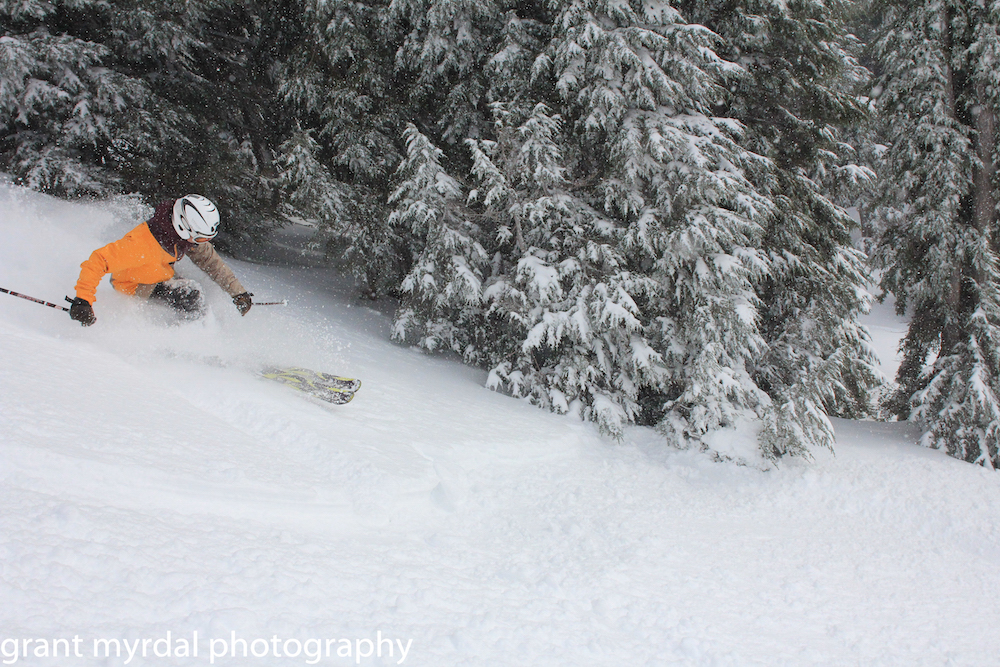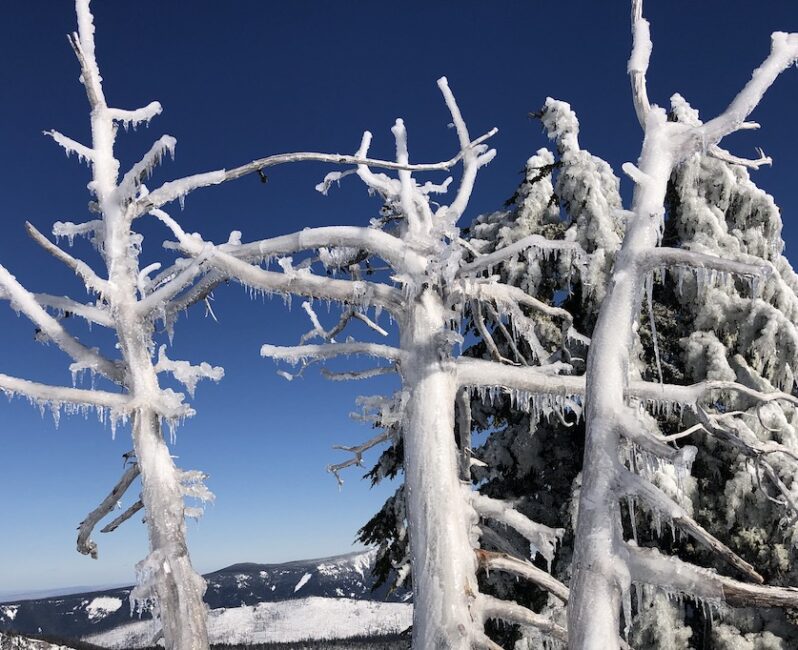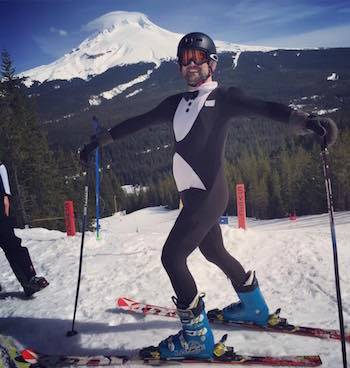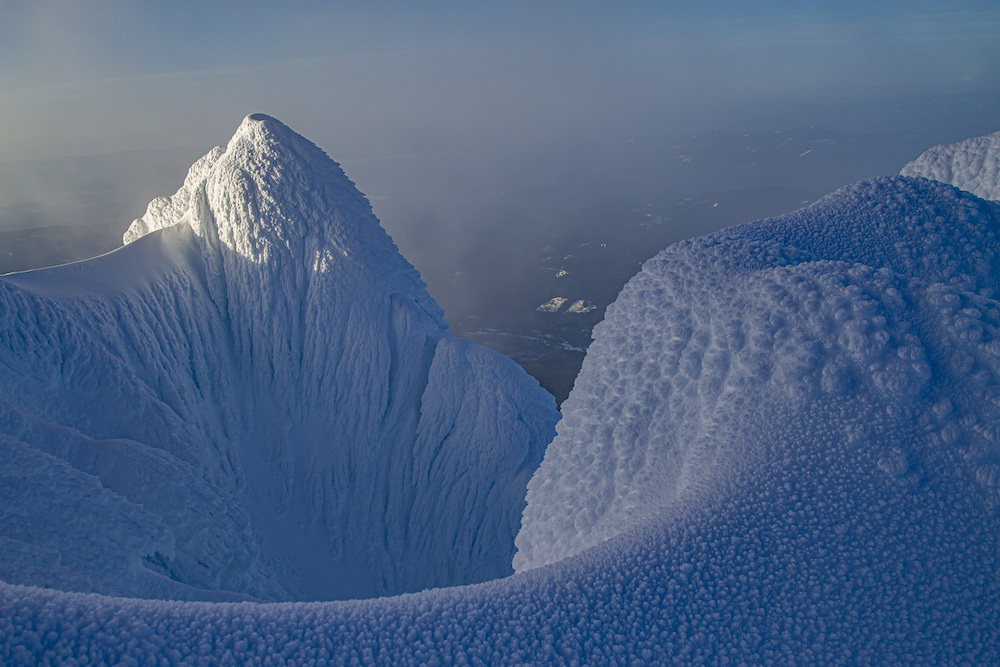The Sustainability Shindig was a pretty low-key affair. The snow was sticky and crowds were thin as environmental advocates and Meadows Sustainability Manager Heidi Logosz gathered in the lodge to discuss car pooling, composting and the price of carbon. No surprise really: It’s hard to compete with bikini contests and pond skim shenanigans when the subtext of the discussion is the depressing and very real possibility that all of this—the sport you love, the mountain culture you grew up with and want to pass down to your kids and grandkids, the snow you have always loved—could one day melt away.It can be particularly hard to talk about climate change after a big snow season, and it was certainly an outstanding winter for Mt. Hood and the Pacific Northwest—though not so good for the East Coast and the Alps. But seasonal snowfall isn’t the problem. The problem is climate change. Whatever your politics, it is hard to argue with the long-term trend. 2015 was the hottest year on record, followed closely by 2014 and subsequently topped by 2016… you get the trend.
Of course all of this warming has an impact on snow levels. How could it not?
As Porter Fox illustrates convincingly in his book DEEP, the impacts of global climate change are already being felt in the ski industry. Those impacts are expected to accelerate over time, as glaciers melt, weather turns more unpredictable, forest fires grow more severe, and winter snow seasons grow shorter. The percentage of resorts deemed “snow-reliable” in the Austrian Alps is expected to drop from 85 percent to 44-63 percent in the 21st century. The world’s highest-elevation ski area, Chacaltaya in the Bolivian Andes at 17,785 feet, closed in 2009 after 70 years of operation due to the melting of the glacier that once provided skiable terrain there. Snowpack in the Northern Hemisphere has shrunk by a million square miles during the past 45 years.
Adaptations
On Mt. Hood, Skibowl has adapted to rising snow elevations by investing heavily in summer activities such as mountain biking, bungee jumping and go kart racing. Timberline and the camps that rely on summer snow on Palmer had to adapt with creativity to survive a brutal snow year that left more rocks on the slopes than snow.
Photo by Kevin Holmes, Rider Chris Moran, High Cascade Snowboard Camp Summer 2015
Some resorts have gone so far as to invest in a future without natural snow: grass skiing in Japan, indoor skiing in Dubai, indoor jibbing on rails and jumps in Toronto. Other resorts have banded into large snow sports conglomerates to offer multiple-resort passes such as the Epic Pass and the Mountain Collective Pass, which enable skiers to follow the snow from Colorado to British Columbia to Europe during winter and even south to Australia for winter in the Southern Hemisphere. Helicopter skiing in Alaska’s Chugach Mountains, the Canadian Bugaboos and other remote wilderness areas is growing increasingly popular, as skiers and snowboarders roam wider in search of precious snow. These trends encourage skiers to travel even further in fossil-fueled airplanes, automobiles and helicopters — again, exacerbating the very problem they are attempting to overcome.
Innovations
In contrast to unsustainable adaptations that demand ever more fossil fuels, electricity and water, some leaders in the snow sports industry are taking steps toward sustainability and regeneration, spurred by customer demand, competitive pressure and overwhelming evidence that climate change is a real and profound existential threat to alpine ecosystems and the future of glaciers and snow. As Heidi Logosz explained in her presentation at the Sustainability Shindig, Mt. Hood Meadows saves water with dual flush toilets and no-water urinals, saves electricity with new LEDs and efficiency initiatives, has cut its waste stream significantly through recycling and composting, and succeeded in shrinking its carbon footprint by a whopping 18 percent in its first year of measuring greenhouse gas emissions.
Other resorts are going even further to make positive changes. Jiminy Peak in Massachusetts powers its chairlifts with wind energy, Tenna in Switzerland runs on solar panels, and Aspen in Colorado captures methane leaking out from old mining operations to power its mountain operations. The nonprofit group Protect Our Winters, or POW, a coalition of skiers, snowboarders and climate change activists, has organized around the goal of preserving the future of snow by “building a movement against climate change.” POW’s research warns that if greenhouse gas emissions continue their trajectory, the majority of ski resorts will be unprofitable by 2100. The group sent representatives to the historic climate negotiations in Paris and was part of the vast diplomatic effort that resulted in an ambitious agreement signed by more than 170 nations. (Yes, the U.S. has pulled out of the deal, which is terrible news. But many, many people all over the planet are doggedly trying to make progress in spite of terrible leadership.)

Dylan Newman, photographed in the Winter of 2015-16 on Mt. Hood by Grant Myrdal
Industry groups also have made progress toward sustainability. In 2000 the National Ski Areas Association (NSAA) launched Sustainable Slopes, “an overarching framework for ski areas on sustainability and enhanced environmental performance.” The NSAA compiles annual reports tracking environmental progress and in 2009 added a grant program to assist resorts with efficiency upgrades and sustainable technologies. Thirty-five U.S. ski areas participated in the 2014-15 Climate Challenge, earning industry praise for innovative recycling programs, refrigeration systems and systemic sustainability strategies that bring reported drops in greenhouse gas emissions. More than 75 percent of NSAA members report they have sustainability efforts under way. Of course, self-reporting is easy, and there is a long history of green-washing in all industries claiming progress spuriously. But still, progress is progress.
The snow sports industry represents just one small niche in the vast global economy of human activities impacting the health of the planet. But it is a niche of great potential. As evidenced by the preponderance of profile pictures on social media showing smiling people at ski resorts, skiers and snowboarders identify strongly with snow-filled mountains, and are deeply attached to them. For many people, a trip to the mountains in winter represents a profound connection to nature, and a connection to a world of ice and snow that is imperiled. The planet’s 150 million or so snowboarders and skiers come from a wide variety of backgrounds and political persuasions, but their shared attachment to mountain snow gives them powerful common cause. That is the reasoning behind the new Shred Hood news category Sustainable Snow, which will provide a platform for ongoing journalistic coverage of news and trends related to the future of snow. Feel free to contact us with story ideas, or add your thoughts to the comments section below.
Shred Hood Editor Ben Jacklet is a lifelong skier and writer based in Portland, Oregon. He has worked for The Stranger, the Portland Tribune, Oregon Business Magazine and the Portland Business Journal.
Jacklet launched Shred Hood in October of 2013 with a mission to serve the people who love Mount Hood in winter with a lively, reliable and timely source of relevant information and entertainment. He returned to school at Portland State University in 2015 to study environmental sustainability, sustainable design practices and the economics of sustainability. He earned his MBA from PSU in June of 2018.
Feel free to contact Ben with story ideas for Shred Hood and/or Sustainable Snow by emailing him here.
Last modified: February 26, 2025




